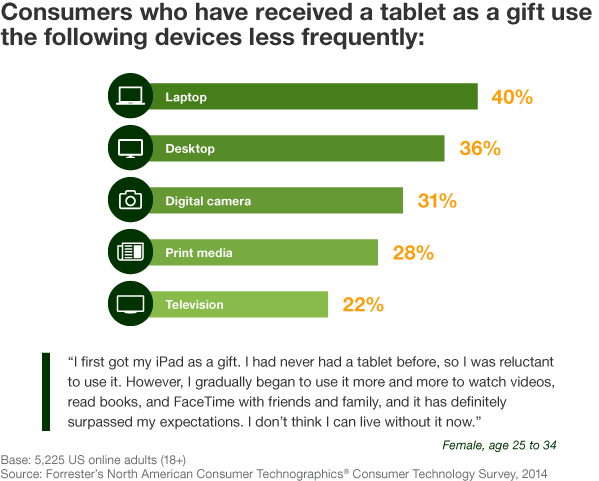The Data Digest: Behaviors Beyond The Gifts
The holiday season is one month behind us, and while the celebratory spirit has faded, the effects live on through the gifts we’ve exchanged. If you think the shiny new object you presented to your loved one had its greatest impact when she unwrapped its box, think again. Apart from the occasional toy tossed to the back of a closet, gifts may have a stronger influence on our long-term behavior and lifestyle than we might think —particularly when it comes to consumer electronics.
For example, according to Forrester’s Consumer Technographics® data, consumers who have received a tablet computer as a gift end up using traditional devices like laptops, desktops, and digital cameras less often. Qualitative insight from our ConsumerVoices Market Research Online Community reveals that sentiments of surprise and delight characterize the experience of these tablet recipients; regardless of their initial technology attitudes, most community members find the devices exceed their expectations and inadvertently change their lifestyle:

According to the National Retail Federation, consumer electronics stores saw more than $23.4 million in holiday sales in 2013 and even more by the close of 2014. However, the more interesting story is unfolding now, as consumers who have leapfrogged the purchase experience begin experimenting with —and embracing —their new devices.
The root of this behavioral change maps back to a report and blog post I published last year about the illusion of stated intentions and the often counterintuitive motivations that drive technology adoption. My research revealed that, “organizations wanting to develop, research, and market new products need to integrate experiential elements into their analytical approach” because when it comes to new technology, consumers need to see it —and try it —to believe it.
